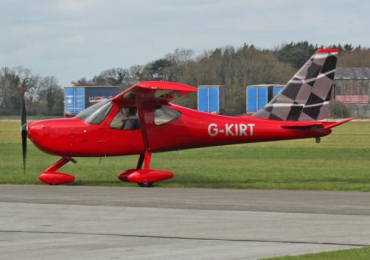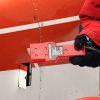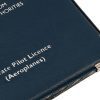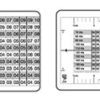Miles M28 Mercury. The only example remaining worldwide.
Complete airframe from a flying aeroplane, dismantled and photo/sketch recorded in detail of every part.
Component parts of wing and tail surfaces all stripped of skins and internal fittings removed. Tail components and
fittings fully restored and covered to first stage Polyfibre system.
Hydraulic brake system and axles made from new to replace cable/drum.
Engine Cirrus Major 3, complete, restored and with LAA paperwork (Miles McCallum). Accessory and oil pump/generator etc needs
re-assembly.
Extensive documentation/reference material. Original logbooks, German, Danish.
An existing project that is unique. The airframe is sound and Aerodux glued throughout. Comes with a newly rebuilt Blackburn Cirrus Major 3 engine.
Contact Details Stu Blanchard 07977 597228
It was generally agreed that elementary flying training should be given in two-seat side-by-side cabin aircraft, not only because of the confidence given to the pupil by the instructor being at his side, but because the whole instructional routine would be simplified.
With these desirable objectives in view, since 1936 the Miles organisation advocated the use of such an arrangement, and carried their ideas into effect in the Whitney Straight and Monarch civilian types with great success.
The ideal form was achieved with the M.28, a machine which holds the distinction of being the first light aeroplane type to be designed and built during the war years, although the original projecting was done in 1939. Intended primarily for two seat initial flying training duties, it can also be used as a three-seat navigational and radio trainer, or as a four seat communication type, and requires little or no adaptation to become a club machine, air-taxi or private-owner aeroplane on the return of peace.
Perhaps the most outstanding feature of the M.28 is that with only 140 hp it can carry four people at 160 mph, for 500 miles with a fuel consumption of 20 mpg. This remarkable performance is combined with a low landing speed, achieved by the use of a new type of retractable auxiliary aerofoil flaps devised by Mr. George Miles who, in addition to designing the M.28, carried out all the initial flight tests himself.
|
Design Company: |
Phillips & Powis Aircraft Ltd |
|
First Flight: |
11 July 1941 |
|
M.28: |
6 - Phillips & Powis, Woodley |
|
Type Specification |
|
|
Applies to: |
Miles M.28 |
|
Type: |
Cabin training and communication aircraft built as private venture |
|
Wing: |
Low wing cantilever monoplane of spruce structure covered in plywood. Wing tapers from root to tip with dihedral. Split flaps fitted as standard |
|
Fuselage: |
Fuselage of spruce structure with plywood covering |
|
Tail Unit: |
Cantilever tailplane with elevator at top of fuselage with single fin and rudder |
|
Landing Gear: |
Single wheel on each main leg, which retract into wing. Tailwheel |
|
Power Plant: |
One 150 hp Blackburn Cirrus Major III engine in nose driving a fixed pitch propeller |
|
Accommodation: |
Two rows of two seat in enclosed cabin |
|
Dimensions |
|
|
Span: |
30 ft 8 in |
|
Length: |
24 ft |
|
Height: |
8 ft 4 in |
|
Wing Area: |
162 sq ft |
|
Weights |
|
|
Empty: |
1,658 lb |
|
All-up: |
2,500 lb |
|
Performance |
|
|
Max Speed: |
159 mph |
|
Rate of Climb: |
840 ft/min |
|
Range: |
408 miles |



























